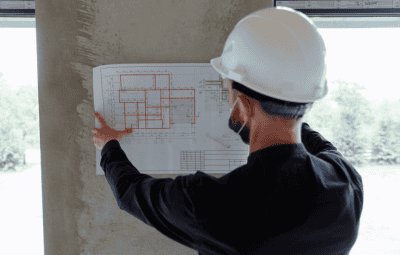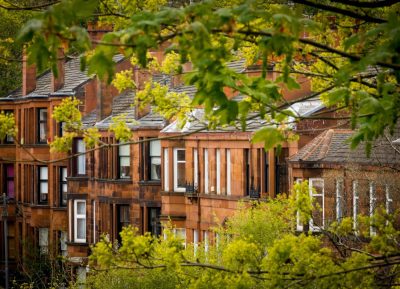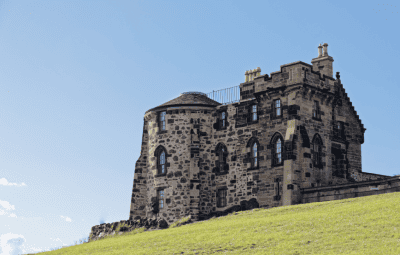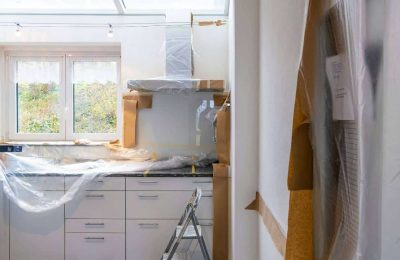Scotland is a country full of rich architectural heritage. You only have to take a glance at some of its striking historic buildings to understand how deep that runs. Scotland’s rich architectural history is preserved largely through its collection of listed buildings – i.e. structures of special historical or architectural interest.

[Image source: Deposit photos]
Ambitious property investors, prospective buyers, and architects all have strict procedures and processes to follow when it comes to listed buildings in Scotland. It’s not quite as clear-cut as buying, selling, or leasing a standard property in Scotland, which is undergoing some long standing legislative changes in itself. Understanding all the nuances and intricacies of listed building ownership, purchasing, and selling, however, can open up a wealth of potential property investment opportunities.
This short guide will walk you through everything you need to know about Scottish listed buildings, from their classifications and criteria to potential considerations of purchasing or owning one.
What are listed buildings?
In Scotland, listed buildings are classified as properties of special architectural, cultural or historical interest.
As such, they are regulated and protected by law, given that they contribute significantly to Scotland’s quintessential architecture and rich culture. The regulations of Scotland’s listed buildings are enforced to ensure their preservation and that their aesthetics remain intact.
Scotland’s listed buildings are classified by Historic Environment Scotland – a public government body that follows legislation stipulated in the Planning (Listed Buildings and Conservation Areas) (Scotland) Act 1997.
Under these rules, buildings of this standard obtain listed classification if they contribute towards Scotland’s ‘character’, are visibly part of the country’s heritage, demonstrate aspects of Scotland’s social and economic past, or have served a vital purpose throughout the country’s history.
Property owners must, therefore, follow the responsibilities of listed building ownership outlined in the Planning (Listed Buildings and Conservation Areas) (Scotland) Act 1997.
Categories of listed buildings in Scotland
Under this same act of legislation, depending on the structure’s cultural, architectural or historical importance, listed buildings can be categorised in one of three different ways.
Category A listed buildings
- Definition: Buildings of national or international architectural or historical importance. Marginally-altered buildings exemplifying a particular period, style, or building type.
- Representation: Approximately 8% of Scotland’s listed buildings fall into this category.
Category B listed buildings
- Definition: Buildings of regional importance beyond a simple local area, or major examples of a particular period, style, or building type, which may have been altered.
- Representation: Around 60% of listed buildings in Scotland are Category B.
Category C listed buildings
- Definition: Buildings of local importance or buildings (of any type, period or style) that have not been altered or modified. Simple traditional buildings that group well with other listed buildings in categories A or B. Buildings that form part of a planned group like an estate or complex.
- Representation: Roughly 32% of Scotland’s listed buildings hold Category C status.
Most recent statistics suggest that there are over 47,000 listed buildings in all of Scotland, with buildings regularly added to and removed from the list.
Listed building criteria
Each building is assessed on its own merits, with Historic Environment Scotland’s designation policy and selection guidance explaining the assessment criteria. As a snapshot, the main considerations for granting listed building status to a building in Scotland include:
Building design – how authentic and complete it is
- Setting – the context and current historical environment surrounding it
- Age and rarity – the older and rarer a building is, the more likely it is to hold special historical interest
- Social historical interest – about the way that a building teaches people what life was like in the past
- Association with people or events of national importance
A building doesn’t need to be used for its original purpose to be eligible for listing. For example, historic buildings may have been converted into blocks of apartments, or commercial spaces available to hire for private functions. Both could be eligible for listing.
There are some other provisions for listing:
- Any presence of preservation notices from local authorities, which can protect unlisted buildings due to be demolished or altered (valid for six months)
- Certificates of intentions not to list (COINTL) which prevent buildings from being listed for five years from the certificate issue date
- Appeals from owners, tenants or occupiers who disagree with Historic Environment Scotland’s decision to grant listed building status
Can parts of buildings be excluded from listing?
For listed buildings that have been designated or amended after 1 October 2015, legal exclusions may apply. The following may be excluded:
- Objects or structures fixed to the building
- Objects or structures within the curtilage (grounds) of the building
- Any parts or features of listed buildings that are not of architectural, cultural, or historical interest
This means that certain features from staircases and fireplaces to chimneys and exterior walls (and everything in between) may be protected as part of the listing. Therefore, it’s wise to check with your local planning authority before beginning any restoration or refurbishment work, as you may need to obtain listed building consent.
Considerations for prospective buyers
If you’re contemplating purchasing and renovating a listed building in Scotland, it’s important to keep these factors in mind:
- Obtain an up-to-date copy of the listing description from Historic Environment Scotland.
- Familiarise yourself with all relevant previous alterations or extensions.
- Understand the specific features that fall under listed building status and those that are exempt.
- Commission a thorough survey by an accredited surveyor.
- Identify the most immediate and urgent repair needs and estimate ongoing maintenance costs.
- Familiarise yourself with the listed building consent requirements.
- Consider consulting with a planning expert or architect with proven experience in listed building design.
- Take out listed building insurance to safeguard you and your investment.
Despite the country calling for huge investment in its housing sector, it’s clear that listed buildings in Scotland undoubtedly offer a tremendous opportunity for property owners to preserve a piece of the country’s rich history and heritage. They do come with specific responsibilities and challenges as far as ownership, maintenance, and preservation are concerned, but the rewards of living in a building steeped in Scotland’s cultural and historical charm can be unmatched.
Be sure to follow all guidelines and legislation closely when pursuing listed buildings to purchase and own in your property portfolio. As you embark on the next stage of your property portfolio expansion, consider those that are pivotal to Scotland’s ever-expanding history, and make the stories they tell firmly part of your own.









